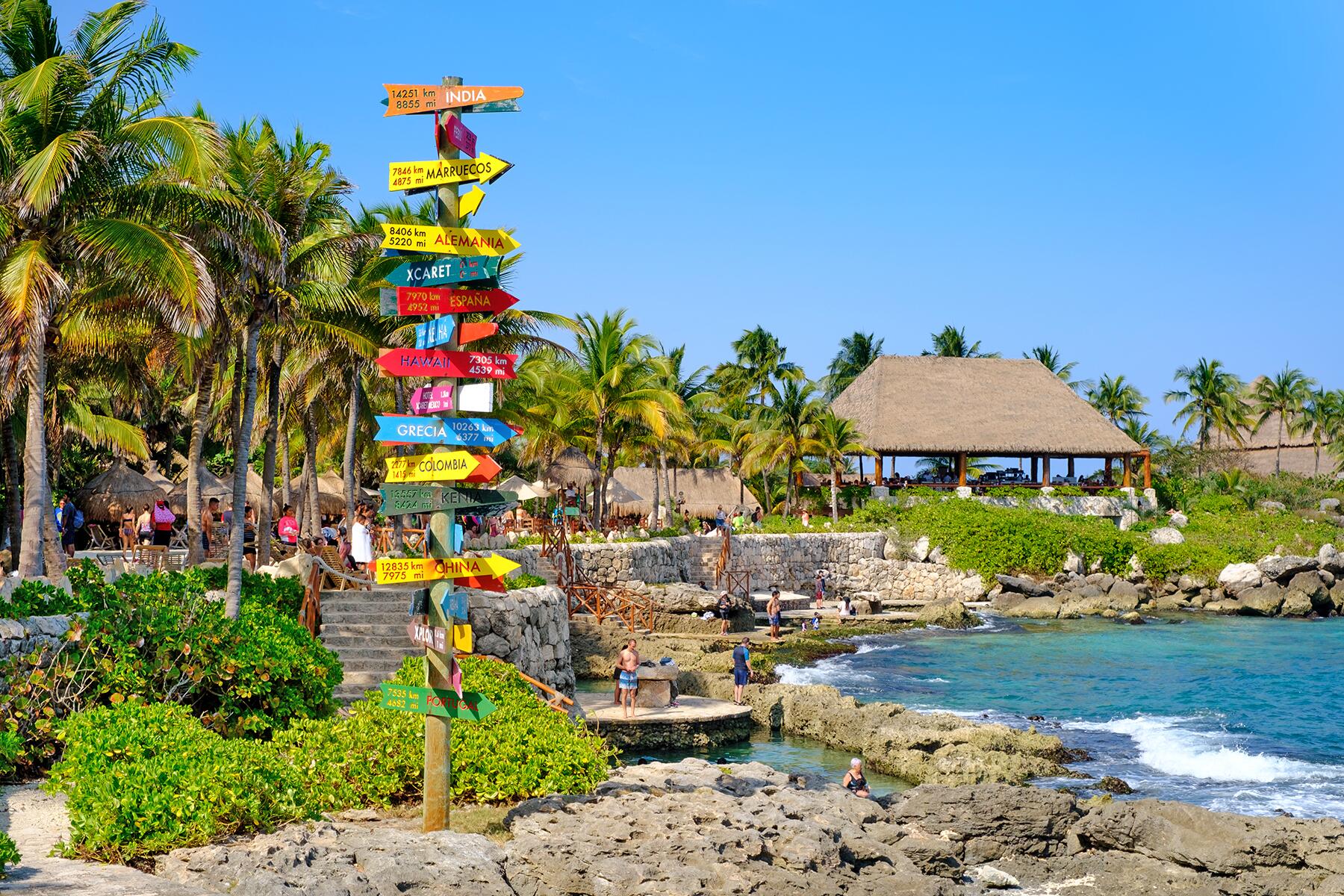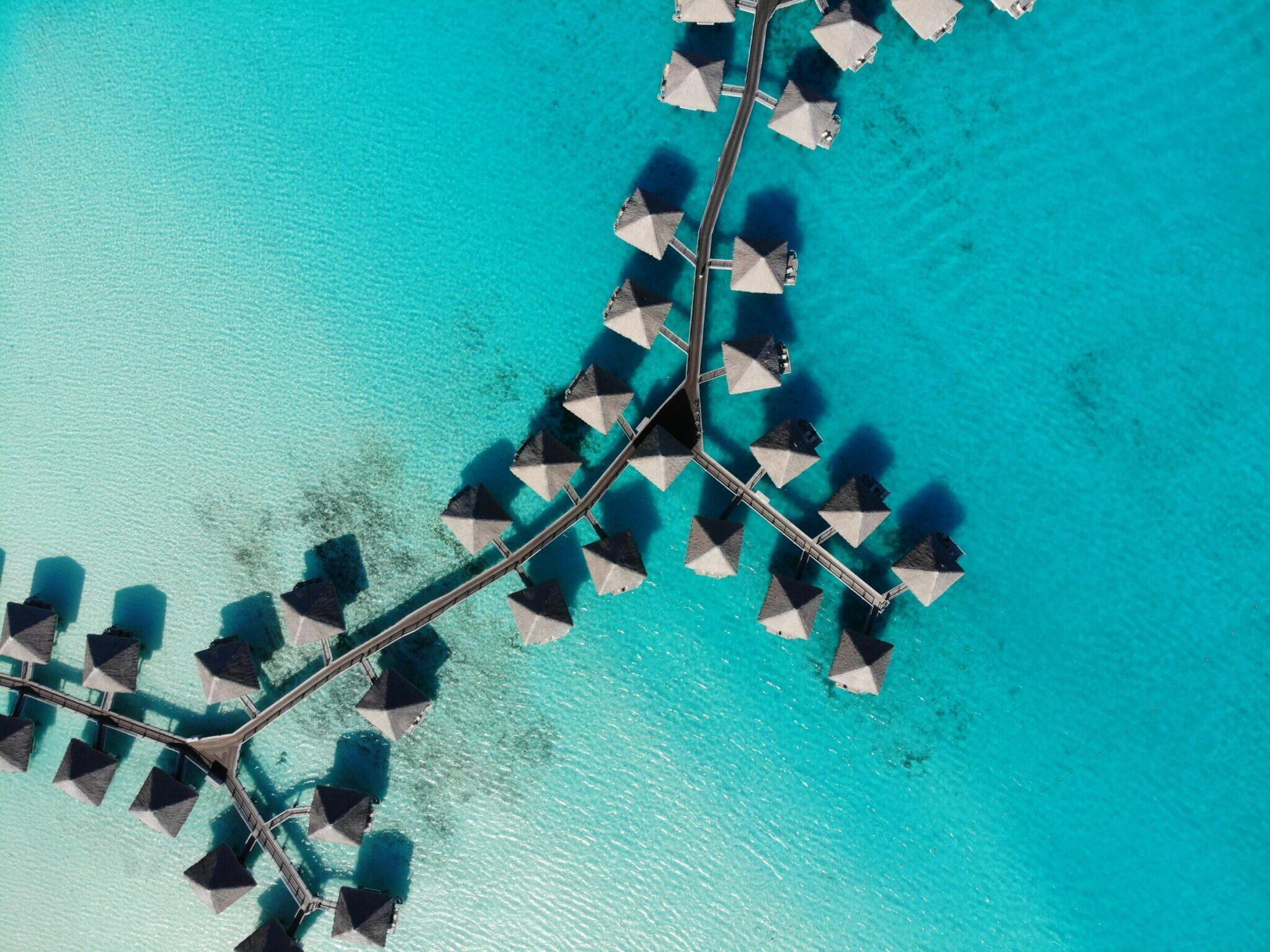- ⁄
- Travel News
- ⁄
- Beaches
Water may be the last thing that comes to mind when you think of deserts, but the desert melts into spectacular beaches and lagoons in these wild locations.
The desert usually evokes shifting dunes and nothingness; not a speck of water in sight. But in the far reaches of certain continents, these golden landscapes collide with roaring waves and gentle waters in the most spectacular of ways. From the dry and arid Sahara Desert to Australia’s colorful Coral Coast, here are ten places where the land meets the sea.
Where the Sahara Desert Meets the Red Sea and the Atlantic Ocean
Along the Western Sahara, modest towns like Dakhla break up the stretch of desert with its red, yellow, and sun-browned houses cropping out of flat terrain. At Dune Blanche, though, you can see how the desert suddenly slopes into the sea, creating a mini-lagoon popular amongst kite surfers. A green oasis is across the Moroccan border where Oued Chbika plays port town and lush marina. Between the Atlantic Ocean and the Atlas Mountains are 400 stone monuments, from curving rock walls to stone circles. Likewise, the Sahara meets the Red Sea in a mesh of various ecosystems. Inspired by the meeting of two immense natural wonders, the environmental art piece “Desert Breath” shows how conical-shaped dunes, swirling depressions, and shallow lagoons interlock infinitely. The relatively sheltered Red Sea also allows for resort towns, coastal mountains, mangrove swamps, coral reefs, and rising woodlands.
Where the Namibian Desert Meets the Atlantic Ocean
The Atlantic Ocean’s pounding waves rush at Namibia’s thousand-mile-long coastline. From above, desert dunes run from the Skeleton Coast to Orange River, like creases in brown cloth. Only a handful of villages inhabit this coastal area, leaving it largely untouched.
Offshore Henties Bay, the shipwrecked Zeila is one of many long-lost ships, looking tiny against the ocean. Meanwhile, a happy colony of fur seals dives near Swakopmund as tourists kayak between them. Dorob National Park, Namib-Naukluft National Park, and Sandwich Harbor bridge the land and sea, but none are as stunning as the Namib Desert. This UNESCO World Heritage Site is an inhabitable piece of art. Its sand, which is whiter near the sea, turns red further inland.
Recommended Fodor’s Video
Where the Atacama Desert Meets the Pacific Ocean
The Atacama Desert meets the Pacific Ocean in the Antofagasta region of Northern Chile. Rich in history, the desert-scape is peppered with abandoned nitrate mining towns and active copper mines around the Pan-American Highway.
Dramatic cliffs drop to long beaches formed by the Pacific Ocean’s belting waves. Dry and arid winds have resulted in salt basins and lava flows throughout the Atacama Desert, lending it a moon-like landscape. The Valley of the Moon in Los Flamencos National Reserve is an exceptional spread of dunes, rugged mountains, and distinctive formations. At this remote location by the Pacific Ocean, dark skies offer some of the world’s most beautiful and clear star-viewing.
Where the Australian Desert Meets the Indian Ocean
Western Australia’s Coral Coast is an explosion of color and personality. North of Perth is the Indian Ocean Drive, a chain of coastal towns that boast white sandy beaches (Cervantes), cray-fishing boats (Jurien Bay), and Port Denison’s limestone cliffs.
The entire stretch is desert meets coast with burnt-orange rocks standing out against the stunning aqua waters of the Indian Ocean, which hide some of the best coral reefs in the country. Meanwhile, the Pinnacles Desert of Nambung National Park is covered with jutting limestone formations. A few kilometers inland, you’ll find Lake Thetis thrombolites, sheltered snorkeling bays, caves, WWII ruins, and eco-camping sites along the coastline.
On the other side of Perth, Cape Leeuwin bookends where Australia and the Indian Ocean meet. The Cape Leeuwin Lighthouse stands at the most south-westerly point, watching waves crash against the shores.
Where the Arabian Desert Meets the Arabian/Red Sea
While the Arabian Peninsula is hemmed in by the Red Sea, the Arabian Sea, and the Persian Gulf for most of its borders—only at the Gulf of Aden does the Red Sea and the Arabian Sea intersect. The deepwater gulf lies offshore Yemen, the Arabian Sea to the east, while the Bab-el-Mandeb strait connects it to the Red Sea.
Known as a vital waterway for shipping Persian Gulf oil, it’s an integral part of the world economy. Marine life is rich here, feeding fishing towns with sardines, mackerel, kingfish, and tuna. Whales and dolphins are frequently spotted in open waters too. Apart from the Port of Aden, the coastline mainly consists of rocky ridges and shallow strips of sand.
Where the Sindh Desert Meets the Indian Ocean
Few look to Pakistan when it comes to beaches, but the Sindh Coast is a stunning display of highlands overlooking pristine beaches. This coastal region looks out onto the Indian Ocean, encompassing the capital city of Karachi and an associated cluster of islands.
Cape Monze juts out of Karachi’s mainland like a great sand bar. Hawke’s Bay Beach, Paradise Point, and Sands Pit are some famous beaches that make up the peninsula. Expect red-tinted sand that glows at sunset. The cluster of islands neighboring Karachi is a lot more mysterious. Volcanic mud Malan Island appears and disappears with the tides, while Buddo Island, Manora Island, and Khiprianwala Island add some green to the portrait, housing mangrove forests, and shrubbery.
Where Iran’s Darak Beach Meets the Sea
Meaning “living along the sea,” Iran’s Darak Beach is aptly named. From behind the high dunes of the desert emerge the golden sands of Darak Beach, occasional palms framing where the Oman Sea and the Indian Ocean unite. Its remote location at the southernmost tip of Iran makes Mokran’s shores some of the most pristine deserts in the country. Swimming and lounging on the beaches are popular activities, but the unmarked dunes are perfect for off-roading.
Where the Antarctic Polar Desert Meets the Ocean
The word desert usually conjures up images of rippled dunes, but Antarctica’s craggy mountains and glaciers bring an icy definition to the word. The permanently iced-over Antarctic Polar Desert spans the continent, halting abruptly at McMurdo Dry Valleys. Here, the cracked, snow-less landscape introduces brown hues to contrast with the vibrant blues of Antarctica’s coastline. Sheer, white cliffs edge the coastline in most places, and only short stretches are flat where it meets water. The sun refracts off the sea to turn the snow blue in certain parts of the day.
Where Oregon’s Dunes Meet the North Pacific
With 31,566 acres, Oregon Dunes National Recreation Area lists among the largest expanse of coastal dunes. Crashing waves can be heard even by the Siltcoos River Highway, leading visitors to a collision of desert, forest, and ocean.
Wind-sculpted dunes that tower to 500-feet make the bulk of this coast. Gently sloping instead of the normal steep headlands, the coast is spotted with marshes, thick “tree islands,” and even lakes. Soft vegetation and shrubbery lead you to soft sand beaches by the water. Horseback riding, hiking, and off-road driving are a few of many recreational activities made possible by the varying levels of the dunes. Hiking trails lead you through open sand to forested canopies, which melt into the deep blues of the North Pacific Ocean.
Where Baja’s Deserts Meet the Sea
There are four main desert areas along the Baja Peninsula, a unique landmass braced by the Gulf of California on one side and the Pacific Ocean on the other. Primarily flatlands run the length of the San Felipe Desert (only at the Valley of the Giants do you see giant cactuses standing 40-feet tall). Soft waves hit long stretches of beaches in a sleepy rhythm. The Central Coast Desert is one of the wildest and most varied in the region, loaded with dunes in some stretches while featuring patches of mangroves and mountain ranges in others. The Vizcaino Desert runs into the Sea of Cortez, home to migratory birds and rich marine life. Magdalena Plain Desert, however, is full of alien-like scrubs. The flattest part of the Baja California peninsula, this sand spit sits parallel to the Pacific Ocean.






